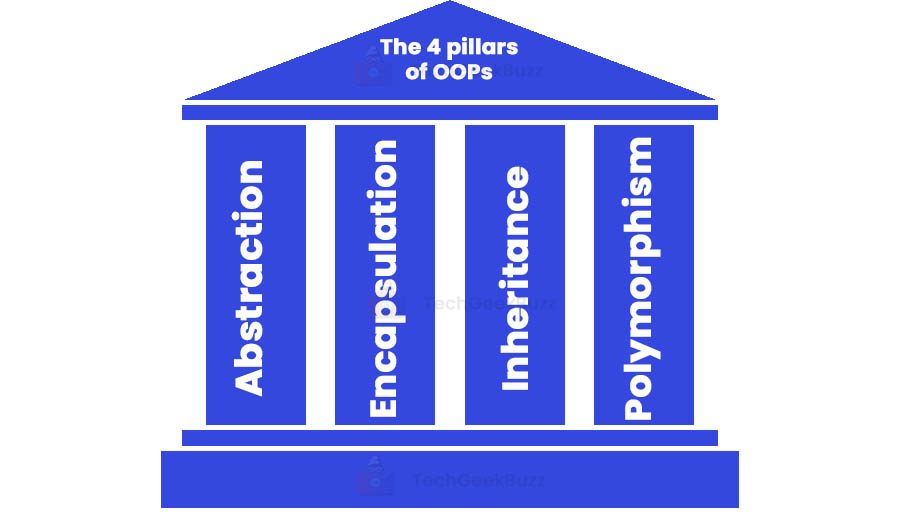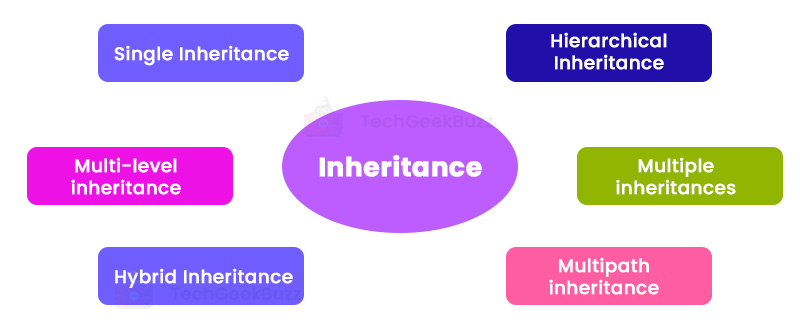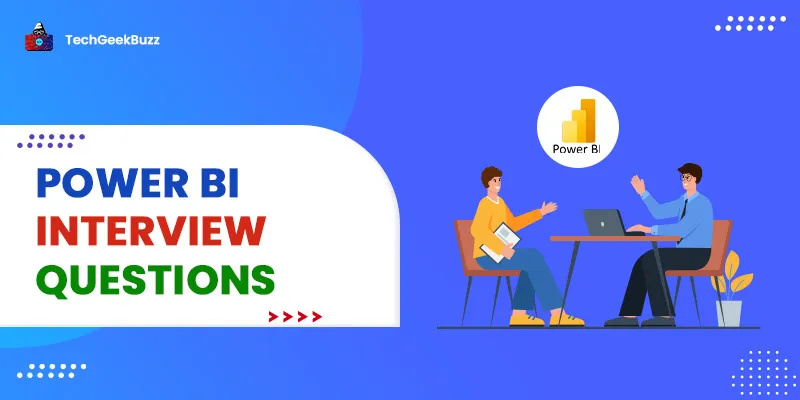Object-Oriented Programming (OOPs) is a programming language paradigm that is based on the concept of Objects rather than just procedures and functions. Objects here can relate to real-world instances like class, entities, etc., which contain special characteristics and behaviors from the class template.
OOP is one of the most popular programming language principles among developers where objects are called an instance of the class and thus also called ‘instances’.
Many programming languages, such as C++, Java, Python, Ruby, PHP, JavaScript, and many more, follow the object-oriented paradigm. For any software developer interview, it is obvious that you may encounter questions about object-oriented programming.
So, to help you with your interview, we have created a list of some commonly asked object-oriented interview questions in this article.
OOPs Interview Questions and Answers for Freshers and Experienced
We have divided the list of OOPs interview questions into three levels: Basic, Intermediate, and Advanced.
Basic OOPs Interview Questions and Answers
1. What do you mean by OOPs?
OOPs stands for object-oriented programming; it’s a programming language paradigm that uses objects in the programming. This paradigm is intended to implement real-world entities or objects in the programming.
OOP works by binding together the data and the functions that work on them so that no other code can access this specific data than function. Here are the different characteristics of OOPs:
Class: A class is a user-defined prototype from which the objects are created. It includes the set of properties that are common to all the objects of one type. Generally, a class includes the following components:
- Modifiers
- Class name
- Superclass (parent class, if any)
- Interfaces
- Body (surrounded by braces, {})
Object: Objects are real-world entities, like state, behavior, identity, and more.
Method: A method is a collection of various statements to perform specific tasks.
2. What are the 4 pillars of OOPs?
The four pillars of OOPs are as follows:

- Abstraction
- Encapsulation
- Inheritance
- Polymorphism
Abstraction: Abstraction means hiding the important details into something, perhaps a prototype or a function. In simple words, it is about fetching data from a large pool to show only relevant details to the object. For instance, you are creating a dating app and have got all the information from the users.
You have a pool of user information like name, address, phone number, favorite food, hobby, favorite book, etc. While this much information is great, not all are required for the app to work. You can select the required information from the pool and create the app.
This process of extracting/fetching or selecting the required information is referred to as an abstraction. Another big advantage of abstraction is that you can apply the same information you select to another application without modifying much in it.
Encapsulation: Encapsulation means enclosing something in the object or removing the excess part of your code and making the code private. This is accomplished when the object is in its private state and another object cannot access it directly.
In simple terms, encapsulation is binding the data members and methods of a program together to perform a particular task, without exposing unnecessary details.
Inheritance: Inheritance means the ability to acquire some or all the properties of another object. With inheritance, you can reuse various fields and methods of the existing class.
In Java, inheritance is classified as single, multiple, multi-level, hierarchical, and hybrid. For instance, Tomato is a fruit, so we assume it from the class Fruit with the subclass of it called Tomato.
Tomato acquires the properties of other fruits like pear, grape, etc. Fruits belong to the class of foods that are fleshy and contain large seeds. However, Tomato is a subclass with unique properties different from other fruits.
Polymorphism: Polymorphism is derived from the two Greek words, poly - many, and morphs - forms. So, polymorphism means ‘many forms.’ A subclass can define its own behavior and share behavior from its parent class.
3. Why Do We Need OOPs?
While there are many reasons why OOPs is preferred by programmers, some of the common ones are:
- It allows users to understand the source code of software easily without getting into actual implementation.
- It increases the readability, maintainability, and understandability of the code.
- It can be used for writing and managing complex software.
4. What are manipulators in object-oriented programming?
Manipulators are the functions that can be used with the insertion or extraction operators of an object.
5. What do you mean by Constructor?
A constructor helps analyze the state of an object and comes up at the time of object creation. In simple terms, it is a special method whose name starts from the class name. The common rules for constructors are as follows:
- The constructor name should be the same as the class name.
- The constructor must have no return type.
6. What are the different types of constructors in C++?
Constructors in C++ are of three types:
- Default constructor: This constructor doesn’t take any argument and has no parameters.
- Parameterized constructor: The constructor that accepts some arguments is called a parameterized constructor.
- Copy constructor: It is a member function that initializes the object by using another object of the same class.
7. What is a Destructor?
A Destructor is a special method, which is called automatically when the object is going to be destroyed. A destructor frees up the resources and memory occupied by the object.
-
Name any 7 programming languages that follow OOP?
8. What are the advantages and disadvantages of OOPs?
Advantages
- OOPs avoid unnecessary data exposure to the user by using abstraction.
- It follows a bottom-up approach and not teh top-down approach like procedural programming.
- You can reuse the code.
- Divides large and complex problems into small modules to make them easy to solve.
- Promotes code reuse and avoids redundancy.
- With the help of encapsulation, OOPs hides unnecessary program details from users.
- The polymorphism concept of OOPs offers a lot of flexibility.
Disadvantages
- Program design is complex.
- Need skilled programmers who can implement the OOP concepts.
- Proper planning is required to execute a single task.
- Classes are overly generalized.
9. What is an inline function?
An inline function is a technique used by compilers that instructs them to insert the body of the function wherever that function is used in the source code.
10. What is a virtual function?
A virtual function is the member of a class where its functionality is overridden in the derived class. This function is implemented by using the ‘Virtual’ keyword and is given at the time of function declaration.
11. What is the difference between a class and an object?
|
Class |
Object |
|
It’s a logical entry. |
It’s a physical entry. |
|
It’s a template from which the object is created. |
It is an instance of a class. |
|
A class is a prototype, which has the state and behavior of the same objects. |
Objects are entities that occur in real life. |
|
It is declared with the class keyword, like Classname {}. |
It is created with the new keyword. |
|
No memory is allocated. |
Memory is allocated to the object. |
12. Are class and structure the same?
No, class and structure are different. The class is saved in the heap memory, whereas the structure is saved in the stack memory. Additionally, data extraction cannot be achieved with the help of structure. With class, we need to use abstraction.
13. What is the difference between class and structure?
|
Class |
Structure |
|
Class is a group of objects that share the same properties. |
It is a collection of various data types. |
|
It is composed of data members and member functions. |
It has data members only. |
|
Classes support inheritance. |
Structure doesn’t support inheritance. |
|
It is a reference type. |
It is a value type. |
|
Its members are private. |
The members are public. |
|
The class keyword defines a class. |
The Struct keyword defines a structure. |
14. What are the different types of inheritance?
The common types of inheritance are as follows:

- Single Inheritance: When the derived class has inherited properties and behavior from a single case class, it is called single inheritance.
- Multi-level inheritance : When the derived class is created from another derived class, it is called multi-level inheritance.
- Hybrid Inheritance: Hybrid is a combination of single, multi, and hierarchical inheritances.
- Hierarchical Inheritance: When more than one class is created from a single base, it is called hierarchical inheritance.
- Multiple inheritances : It allows the creation of classes by combining multiple classes and their corresponding hierarchies.
- Multipath inheritance: It is a method of inheritance in which one derived class can easily inherit the properties of the base class.
15. What are the arguments? What are the different ways of passing arguments to a program?
Arguments are values passed to a function when it is called in a program.
There are three different ways to pass arguments to a function, as follows:
- Pass by Value: The passing of arguments to a function takes place at the calling position, and does not reflect any changes in the parent function.
- Pass by Reference: The passing of arguments to a function takes place at the calling position, and reflects changes in the parent function.
- Pass by Pointer: Pointers are responsible for passing arguments to a function.
16. How is procedural programming different from the OOP?
|
Procedural programming |
Object-oriented programming |
|
Based on functions. |
Based on real-world objects. |
|
Follows a top-down approach. |
Follows bottom-up approach. |
|
Less secure as it is difficult to hide data. |
More secure as it can hide data easily. |
|
Data is visible. |
It encapsulates the data. |
|
Code cannot be reused. |
Code can be reused. |
|
Modifications and extensions of code are difficult. |
Easy to modify and extend the code. |
Intermediate OOPs Interview Questions and Answers
17. What is coupling and how is it helpful?
The separation of concerns in programming is called coupling. The coupling means that the objects in the OOPs are not changed directly or modified. It also defines how closely two individual objects are connected. Coupling is of two types: loose coupling and tight coupling.
Loose Coupling: When the classes, methods, or objects have low dependencies on each other or are independent of each other, it is referred to as loose coupling. This type of coupling makes the code changeable, flexible, and easier to work with.
Tight Coupling: Tight coupling is when classes, methods, or objects are highly dependent on each other. It creates the condition where modifying one piece of code may change the other code. Also, reusing code in tight coupling is difficult.
18. What is garbage collection in OOPs?
Garbage collection is a mechanism for handling the memory in the program. It helps in removing the free space by removing the objects that are no longer required.
19. What is the super keyword?
The super keyword is used to invoke the overridden method. It allows access to overridden methods and hidden members of the superclass.
20. What is an access modifier?
Access modifiers determine the scope of variables or methods that can be accessed from various classes or objects. Access modifiers are of the following types:
- Protected
- Public
- Friend
- Private
- Protected friend
21. What are sealed modifiers?
A sealed modifier is an access modifier where the methods cannot inherit it. This modifier is also applied to the events, methods, and properties.
22. What is an exception?
An exception is a special event that occurs at the time of execution of the program, and completely disturbs the flow of instructions in a program.
23. What is exception handling?
Exception handling is the mechanism in object-oriented programming to handle runtime errors with the aim to maintain the normal flow of a program. The exception happens when an unexpected event occurs that needs special processing.
Exception handling can be performed both as a part of the program or at the hardware level (by using mechanisms that are built into the design of the CPU).
24. What is static and dynamic binding?
Binding is an association of the name along with a class. Static binding, also called early binding, is a type of binding in which the name is associated with the class at the time of compilation.
Dynamic binding is a type of binding in which the name is associated with the class at the time of execution. Dynamic binding is also called late binding.
25. Can you run a Java application without implementing OOPs?
No, Java applications are dependent on the object-oriented programming model and thus cannot be implemented without it. However, programming languages like C++ can be implemented without the OOPs.
26. What are the limitations of OOPs?
Some of the major limitation of OOPs are as follows:
- OOPs need intensive testing.
- As compared to procedure-oriented programming, OOPs take more time to solve programming issues.
- The software developed with an object-oriented programming language needs a lot of planning.
- Everything in OOPs is treated as an object. So, we need to have excellent knowledge of objects before using OOPs for programming.
27. Which operators cannot be overloaded?
You cannot overload the following operators:
- Scope resolution (::)
- Member selection through the pointer to a function (.*)
- Member selection (.)
28. What is encapsulation?
Encapsulation is the technique of binding data members and methods that operate on those data members into a single unit and hide unnecessary details from users; the data can be restricted to the members of that class. Technically, in encapsulation, a class is hidden from other classes using the data-hiding concept.
Encapsulation can be achieved by declaring the all variables in a class as private and the methods as public to get and set the values of variables. It is more defined with the getter and setter method.
29. What are the advantages of encapsulation?
The following are some remarkable advantages of encapsulation:
- Data Hiding: Encapsulation is a technique of hiding data from users. With encapsulation, you can restrict the access to data members in a class and hide the implementation of the class. This means that the users will not be able to understand how the variables inside the class are storing values.
- Increased flexibility : Encapsulation provides us with the flexibility to define the variables as read-only or write-only, depending on the requirements.
- Reusability: With encapsulation, it becomes easy to reuse the code and change it based on teh requirements.
- Easy testing: It is easy to unit test the encapsulated code.
Advanced OOPs Interview Questions and Answers
30. What is a friend function?
A friend function of a class is a function that is defined outside the scope of that class but has all the rights to access the class’s protected as well as private members. It is not analogous to other member functions in a class. Basically, a friend function can be the member of another class or a global function.
You can declare the friend function anywhere in the class with any of the three access modifiers, namely public, protected, and private. The keyword ‘friend’ is used to declare a friend function.
31. What is function overloading?
Function overloading is a technique in object-oriented programming where two or more functions have the same name but a different parameter list. Each function performs a different task from the other one. The compiler differentiates these functions based on the types of parameters and the number of parameters.
32. What is operator overloading?
Operator overloading is a compile-time polymorphism. A particular operator is overloaded in a class to provide a special meaning to the existing operator or user-defind data types. For example, we can overload the operator ‘+’ in a class as a string to concatenate two strings.
33. What do you mean by ternary operator?
Also called a conditional operator, the ternary operator is the operator that takes three arguments.
34. What is the 'Finalize' method?
Finalize method helps to perform the cleanup operations on the resources held by the objects that are not in use. The garbage collector is responsible for calling the finalize method before destroying the object from the memory. Every object in a class by default calls the finalize() method before deletion.
35. What is Overriding?
Overriding is a feature that lets a subclass give an implementation of the method, which overrides the primary class. By providing the same name, same parameter, and same return type, it overrides the implementation in the superclass.
36. What do you mean by tokens?
Identifiers, strings literals, operators, and identifiers are some examples of tokens; sometimes punctuations (commas, braces, parentheses, brackets) are also considered tokens.
37. What do you mean by 'this' pointer?
'This' refers to the current object of the class. It is a keyword that is used as a pointer to differentiate between the global and current object.
38. What is a pure virtual function?
A pure virtual function is a member function having its declaration in a base class and the derived class redefines or overrides that function. A function can be declared as a pure function by using the =0 operator.
For example:
Virtual void
function1() = // Virtual, Not Pure
Virtual void
function2() = 0// Pure virtual
39. What do you mean by dynamic or runtime polymorphism?
Dynamic or runtime polymorphism is also known as overriding, where the call to an overridden function is resolved at the run time instead of the compile time. In simple terms, this means having two or more methods with the same signature and same name but with a different implementation process.
40. What is a copy constructor?
A copy constructor is a special constructor used for creating a new object as a copy of the existing object. A programmer can explicitly define the copy constructor. If the programmer does not, the compiler defines it.
41. Can we use static methods with non-static methods?
No, you cannot use the static method with non-static methods.
42. What is the difference between override and new?
The new modifier is used to instruct the compiler to use a new implementation instead of using the base class function. On the other hand, override helps override the base class function.
43. What do you mean by hybrid inheritance?
Hybrid inheritance is the combination of multi-level and multiple inheritances.
44. Which keyword can you use for overloading?
You can use the operator keyword for overloading.
46. What do you mean by method?
A method is a set of instructions for performing a specific task. It is basically defined as a part of a class and is included in any object created in that class.
47. Which concept mechanism is used as a reuse mechanism?
You can use inheritance in the OOPs as a reuse mechanism.
48. Do you need a parameter for the constructor?
No, we don't need a parameter for the constructor.
49. What do you mean by default access modifier in the class?
The default access modifier of a class is always private and internal for class members.
50. What are the limitations of inheritance?
Inheritance increases the effort and the execution time; you also need to jump back and forth between the parent and the child class that is tightly packed. Also, inheritance needs careful implementation because the wrong one might lead to false results.
51. What is the “Law of Demeter” (principle of least knowledge)?
It suggests that a module (or object) should only talk to its immediate collaborators and not “chain calls” through many objects. In other words, “Only talk to your friends, not strangers.” Helps reduce tight coupling.
52. What is composition (object composition), and how does it compare with inheritance?
Composition means building classes by including instances of other classes (has-a relation). It is often preferred over inheritance because it provides more flexibility and less coupling. Inheritance can lead to fragile hierarchies, whereas with composition you can change behavior more dynamically.
53. Explain coupling and cohesion in OOP design.
-
Cohesion measures how strongly related and focused the responsibilities of a single module/class are. High cohesion is desirable.
- Coupling measures how interconnected classes or modules are. Low coupling is desirable. Good OOP design aims for high cohesion and loose coupling.
54. What is the open/closed principle in OOP (one of the SOLID principles)?
The open/closed idea suggests parts of a program ought to allow additions while staying untouched underneath. So instead of changing what’s already built, you build on top, keeping things steady, cutting down errors, simplifying upkeep, and helping grow systems smoothly as needs shift.
55. What is the Liskov Substitution Principle?
A subclass should slide into the spot of its base without breaking stuff; it’s got to behave just like the main class said it would, so everything runs smoothly when you switch one out for the other.
56. What is the Interface Segregation Principle?
Clients should not be forced to depend on methods they don’t use. In practice, that means you prefer smaller, more specific interfaces rather than large “at” ones.
57. What is the Dependency Inversion Principle?
High-level modules should not depend on low-level modules; both should depend on abstractions (interfaces). Additionally, abstractions should not depend on details; details should depend on abstractions. This reduces coupling and increases testability.
58. What are “design patterns”? Why are they useful in object-oriented design?
Design patterns solve typical coding issues without starting from scratch. Because they’ve been tested before, they shape your code better, making it simpler to grasp or update later. When working with objects, these approaches save time by skipping redundant work while building sturdier, clearer program layouts.
59. What is polymorphic substitution in practical OOP, and how do you use it?
Polymorphic substitution refers to using a base class or interface type to refer to objects of subclass types, enabling writing code that works with the abstraction rather than concrete implementations. It enables flexibility, e.g., passing different subclass implementations into a method expecting the base class.
60. How would you design a system for versioning and extensibility of objects over time (backwards compatibility in object models)?
Build flexible object designs with fixed schemas and clear version labels while supporting older setups, include new fields without breaking old ones, and set fallback values.
61. What is the difference between abstraction and encapsulation?
|
Abstraction |
Encapsulation |
|
The process of hiding complex implementation details and showing only essential features. |
The process of wrapping data or variables together into a single unit as a class. |
|
It helps you to simplify the complexity. |
Used to protect the data from unauthorized access. |
|
Achieved using the abstract classes, interfaces, and method overriding. |
Achieved using access modifiers and getter/setter. |
|
Works at the design level. |
Works at the implementation level. |
|
Focuses on what an object does. |
Focuses on how an object's data is hidden and controlled. |
62. What are mixins in OOP?
A mixin’s just a class giving tools to others but not acting as their base. This way, you can recycle logic without relying on standard inheritance chains. You’ll often spot these in stuff like Python or Ruby.
63. What is method overloading vs. method overriding?
- Method overloading occurs when one class holds multiple methods sharing a name yet varying in their parameters, say, kind, number, or order, split by commas.
- When a subclass changes how a method works compared to the superclass, multiple forms can run during runtime; this means the same call acts differently based on which instance is active.
64. What is object slicing?
Object slicing happens if a child class object gets copied into a parent class container directly; then extra features from the child vanish. Just the core piece remains, so details go missing along with dynamic function calls.
65. What is multiple inheritance, and why is it avoided?
That's multiple inheritance. Some folks skip it, and messy setups pop up, like clashing names or the tricky diamond issue. Stuff gets tougher to follow, fix, or update when you toss this into the mix instead of sticking with just one parent or using clean interface-style rules. Some languages (like Java) avoid it for classes but support it via interfaces.
Conclusion
The object-oriented programming paradigm is built on the concepts of classes and objects. For any software developer interview, you can expect questions about object-oriented programming. This is because most modern and popular programming languages follow OOPs.
Just have a look at the aforementioned OOPs interview questions before appearing for an interview to recollect the concepts. If you have encountered questions other than the one mentioned above, feel free to share them in the comments section, and we will add them to our list.
People are also reading:




